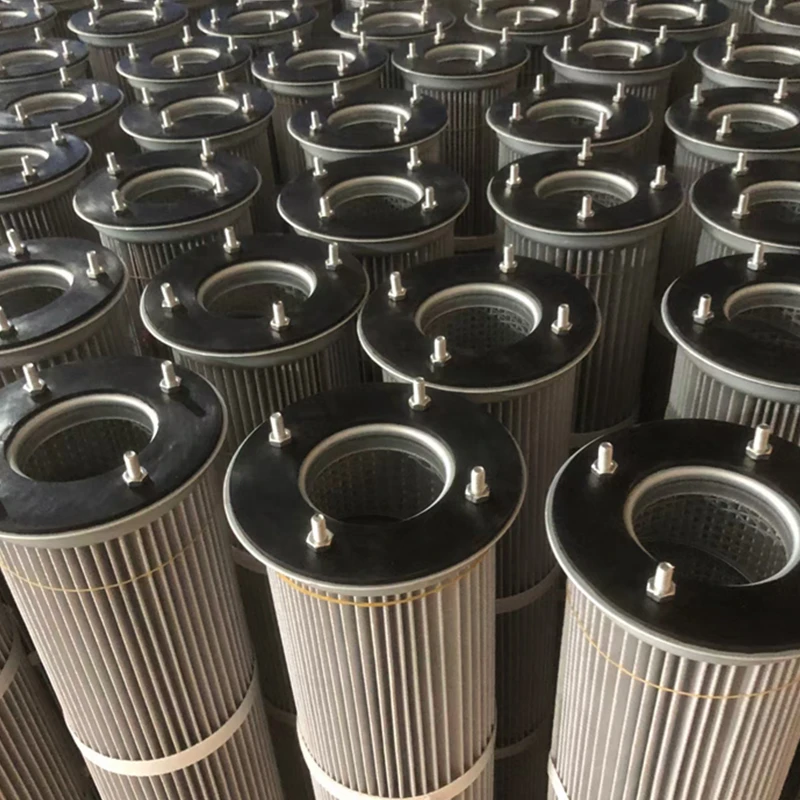 Tel:
+8615930870079
Tel:
+8615930870079
Nov . 12, 2024 07:48 Back to list
antistatic filter element
Understanding Antistatic Filter Elements Essential Components for Industries
In today’s highly advanced industrial landscape, the role of filter elements extends far beyond simple air filtration. One of the crucial types is the antistatic filter element, designed to manage static electricity while effectively providing clean air. Static electricity can pose significant risks in many environments, especially those involving flammable substances and delicate electronic components. This article delves into the importance, mechanism, applications, and advantages of antistatic filter elements.
Importance of Antistatic Filter Elements
Antistatic filter elements are critical in environments where static electricity can lead to explosions or disrupt electronic equipment. Static buildup occurs when materials are rubbed together, creating an imbalance between positive and negative charges. In environments like chemical plants, grain handling facilities, and electronics manufacturing, the risk associated with static discharge can result in catastrophic accidents or costly equipment damage. Therefore, implementing antistatic solutions, including filter elements, is vital in ensuring safety and operational efficiency.
Mechanism of Antistatic Filter Elements
Antistatic filter elements integrate a special layer or treatment that facilitates the dissipation of static charges. Typically made from synthetic fibers or treated materials, these filters have conductive properties that allow them to safely discharge accumulated static electricity. As air passes through the filter, particles and contaminants are trapped, while any static charges are neutralized before they can cause harm. This dual function not only helps in maintaining air quality but also significantly reduces the hazards associated with static electricity.
Applications of Antistatic Filter Elements
The applications of antistatic filter elements are diverse and span multiple industries
.1. Pharmaceutical Industry In pharmaceutical manufacturing, the presence of dust and other particles can contaminate products. Antistatic filters help maintain cleanroom standards while preventing static discharges that could lead to explosive environments or affect the integrity of sensitive compounds.
antistatic filter element

2. Electronics Manufacturing In the electronics sector, even minute static discharges can damage sensitive components. Antistatic filters provide essential air quality management during the assembly and testing phases, ensuring that static electricity does not interfere with equipment performance.
3. Chemical Processing Chemical plants often handle volatile substances that are prone to ignition by static discharge. Employing antistatic filters can significantly mitigate these risks, protecting both personnel and facilities.
4. Food Processing Preventing contamination in food processing is critical. Antistatic filters help not only by trapping airborne particles but also by maintaining a safe environment free from static electricity that can lead to ignition in dust-laden atmospheres.
Advantages of Antistatic Filter Elements
The advantages of utilizing antistatic filter elements are numerous. Firstly, they enhance safety by reducing the risk of static-induced explosions or fires. Secondly, they improve equipment longevity by protecting sensitive components from damage caused by static charges. Additionally, by maintaining high air quality, these filters contribute to a healthier workplace environment, boosting overall productivity and employee satisfaction.
Moreover, antistatic filter elements are often designed for easy installation and maintenance, making them a practical choice for various industrial applications. Their durability and efficiency also ensure that they provide long-term savings through reduced downtime and fewer replacements.
Conclusion
In summary, antistatic filter elements play an indispensable role in modern industrial applications where air quality and electrical safety are paramount. Their ability to mitigate static electricity while providing effective filtration makes them essential in sectors such as pharmaceuticals, electronics, chemical processing, and food manufacturing. As industries continue to advance, understanding and implementing reliable antistatic solutions will remain crucial for maintaining safety and operational efficiency. Investing in high-quality antistatic filter elements is not just a precaution but a necessary strategy for ensuring compliance, safety, and productivity in today’s dynamic industrial environments.
-
Types and Applications of Air Filtration CartridgesNewsJul.28,2025
-
The Role of Gas Turbine FiltersNewsJul.28,2025
-
Mastering Air Filter Cartridge UseNewsJul.28,2025
-
Advanced Turbine Filters for Modern Gas TurbinesNewsJul.28,2025
-
Cellulose Air Filter Cartridge Advantages in Dust FiltrationNewsJul.28,2025
-
Cellulose Filters for Air Particle ReductionNewsJul.28,2025

 Email:
Email:





